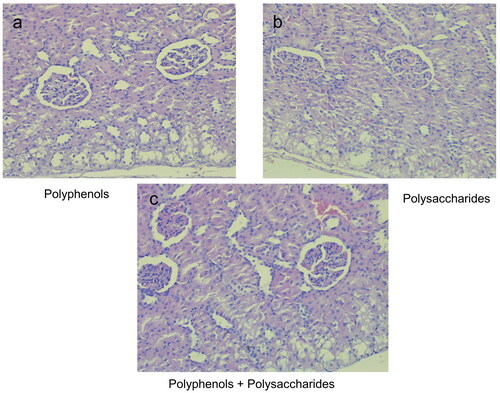Figures & data
Table 1. Effects of individual L. barbarum fractions administered p. o. at a dose of 2 mg/kg (b.w.) on the activities of the enzymes CK, CK-MB, LDH and AST in DOX-induced cardiotoxicity (20 mg/kg, b.w., i.p.).
Figure 2. Changes in biochemical markers for cardiotoxicity upon treatment with pectin-free fraction (group 5), polysaccharide fraction (group 6) and combination of both fractions (group 7) compared to the DOX-model (group 8). Values are presented as mean ± SD. One-way ANOVA was performed for comparison between groups. ** p < 0.01 compared to the model.
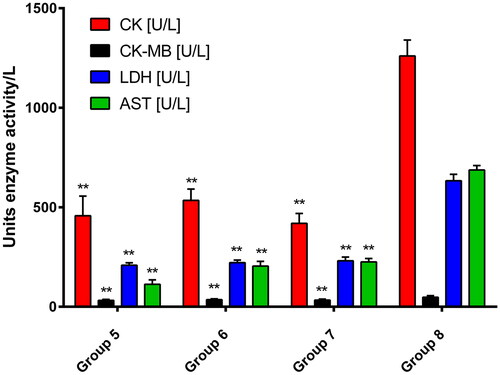
Figure 3. Changes in biochemical markers for nephrotoxicity by treatment with pectin-free fraction (group 5), polysaccharide fraction (group 6) and combination of both fractions (group 7) compared to the DOX-model of nephrotoxicity (group 8). Values are presented as mean ± SD. One-way ANOVA was performed for comparison between groups; ** p < 0.01, *** p < 0.001 compared to the model.

Table 2. Effects of the different L. barbarum fractions administered orally at a dose of 2 mg/kg (b.w.) on serum urea, creatinine and urinary levels in DOX-induced nephrotoxicity (20 mg/kg, b.w., i.p.).
Figure 4. Photomicrographs of muscle sections of left ventricular chambers stained with H&E × 400. (a) Control (group 1) - normal myofibrilar architecture. (b) DOX-treated animals (group 8; cumulative dose: 20 mg/kg, b.w., i.p.) - disorganization of cardiac muscle fibres (left arrow), cytoplasmic fading and pyknotic nucleus formation (central arrow) and myofibril ruptures (right arrow).
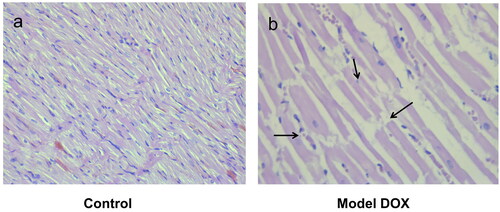
Figure 5. Photomicrographs of muscle sections of left ventricular of rats treated with the individual fractions of L. barbarum - pectin-free fraction (a), polysaccharide fraction (b) and combination of pectin-free extract and polysaccharides (2 mg/kg, b.w., p.o.) (c); H&E × 400.
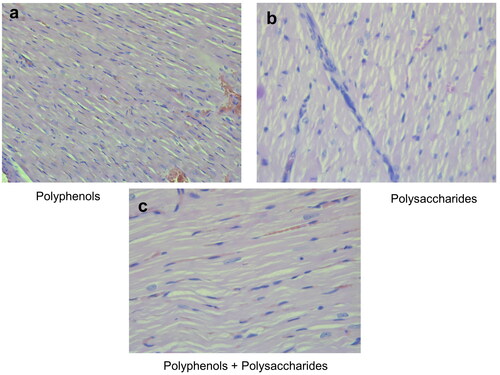
Figure 6. Photomicrographs of rat kidney bark stained with H&E × 400. (a) Control (group 1) - normal structure of nephrons. (b) DOX-treated animals (group 8; cumulative dose: 20 mg/kg, b.w., i.p.) - damaged tubular cells (left arrow) and total collapse of glomeruli (right arrow).
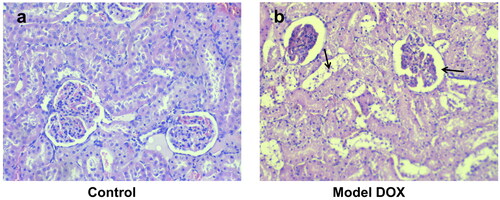
Data Availability
All data that support this study are available from the corresponding author upon reasonable request.


